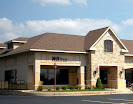BY FLETCHER FARRAR
At a breakfast meeting with about 100 business leaders at the University of Illinois at Springfield last week the Springfield Chamber of Commerce gave its inaugural annual report on the big initiative it calls the Quantum Growth Partnership. The purpose was not only to report to the public and be accountable to the many businesses that invested $10,000 apiece in this $5.2 million effort to grow Springfield’s economy over the next five years. It was also to convince skeptics that the program has legs, that it’s not all talk and meetings and fancy brochures. Though Q5 is still more about good ideas than solid accomplishments, enough energy has been exerted by enough respected community leaders to persuade many who’ve been standoffish to join the effort. One told me as we left the breakfast that even though his firm had invested money to become a Quantum Growth “partner,” he hadn’t really expected much to come of it. Now, he says, he wants to get involved before he gets left behind.
What’s making a believer of me is the inclusion of “improve minority participation” as one of the program’s five basic goals, and the way the Chamber has gone about making that real. It joined forces with the Springfield Black Chamber of Commerce, whose president, Thomas Dorsey, heads Q5’s Diversity Development Council. “It’s our joint venture with the Black Chamber that helped to start making things happen,” says Gary Plummer, Chamber president. The push to make minorities a key emphasis came out of focus-group discussions in March 2006. Plummer credits a white businessman, real-estate broker Sam Nichols, with making the point others readily accepted. “We have two Springfields, one white and one black, and it’s not acceptable anymore,” Nichols said, according to Plummer. “We in the business community have to help break down the walls.”
Though much of the Diversity Development Council’s first year was spent establishing relationships and identifying goals, that grueling work will show fruit soon. Within the next 60 days the group expects to announce a program of grants and loans to help small businesses start up or expand, according to Tim Rowles, executive director of The Springfield Project, who’s serving as the Chamber’s point man for diversity development. “These will be small dollar amounts,” Rowles says, “but even $1,000 goes a long way when a business is starting or struggling to survive.”
Also soon to be announced is an expanded summer youth-employment program that Q5 will sponsor in partnership with The Springfield Project, which has operated a similar program for years. Aided by a grant from the Tracy Foundation, the program will place about 50 minority youth in salaried jobs with local businesses. Hispanic youth from Cass County will be included this year, Rowles said.
East-side redevelopment, a third area of the Diversity Development Council’s current focus, will take longer to show results but may have a greater long-term impact. What started as a housing subcommittee has expanded its vision to include commercial and retail development, in addition to residential, and has expanded its territory to include not only the central east side but the southeast and northeast as well. Rowles said the group is working with the Lee Carey Neighborhood Association to develop a comprehensive plan for the area bounded by South Grand Avenue and Cornell, King, and Pope, which could include condos and retail along South Grand. Q5 literature emphasizes that the rebuilding of neighborhoods requires “engaging neighbors first, to set the vision, tone, direction, and pace of development.”
Stay tuned. A lot could happen, or it could all fall apart. “I’m pleased that at least they have set up something to try to work with the minority community,” says Mike Pittman, a black entrepreneur who’s seen many programs come and go. “It’s too soon to tell whether anything solid will be accomplished.” Some projects fail when too many try to take credit. “Some people start out meaning well, and then they get an agenda to promote their own organization and stay on top. There are too many people trying to stay on the throne.” And Pittman has wondered whether there are enough smart risk-takers to make minority business efforts successful: “You not only have to have a quarterback, you need a receiver who can catch the ball. And know what to do once he catches it.”
Even so, many are giving credit to one quarterback for getting the game off to a good start. “Gary Plummer has been a breath of fresh air at the Chamber,” says Pittman. Mayor Tim Davlin calls Plummer “relentless,” a sentiment echoed by Rowles: “This guy is determined to make this happen. It took great courage to make diversity development part of the Q5 program.”
Fletcher Farrar, president of Illinois Times, is a member of the board of The Springfield Project.
The Ultimate Guide to Buying a Home in Nashville
8 months ago

No comments:
Post a Comment